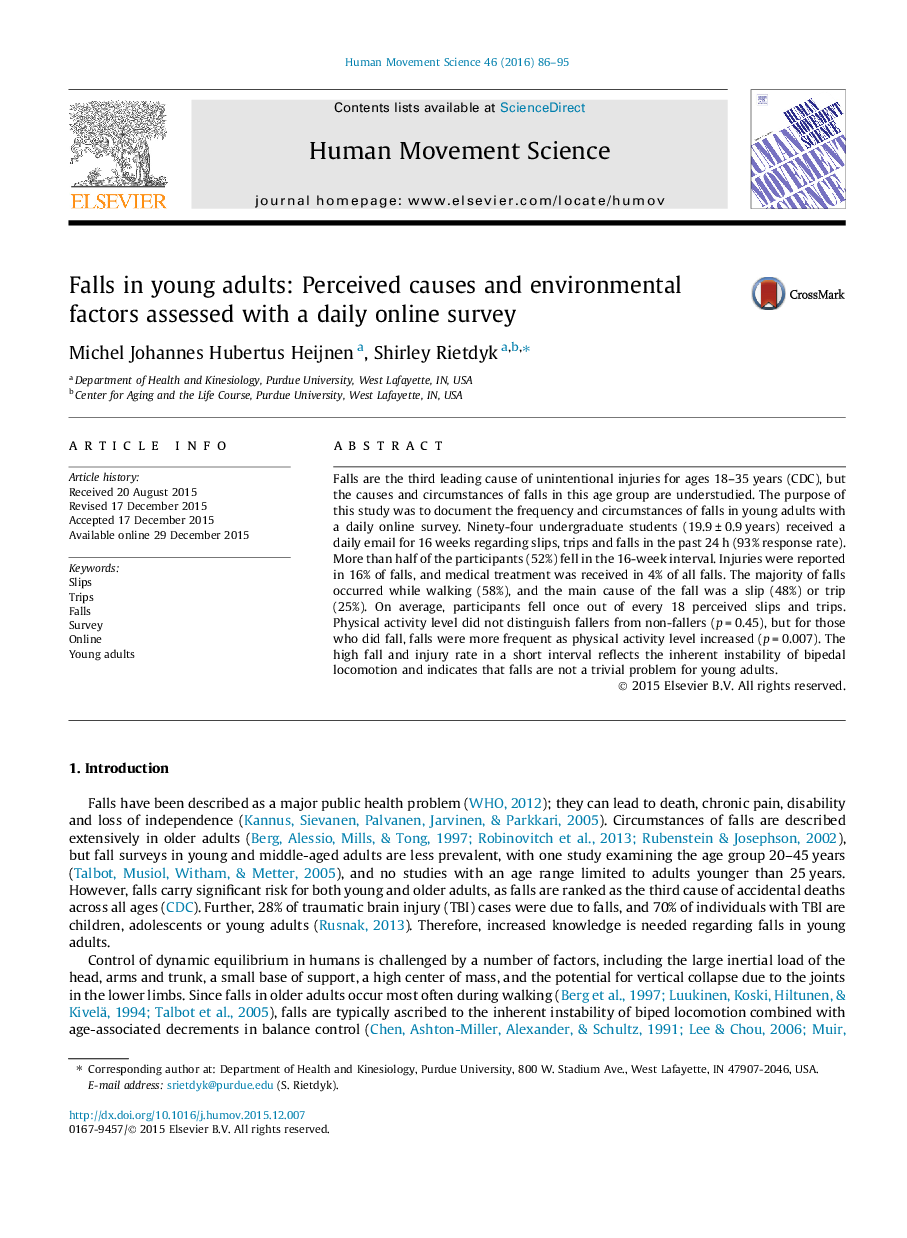| Article ID | Journal | Published Year | Pages | File Type |
|---|---|---|---|---|
| 928208 | Human Movement Science | 2016 | 10 Pages |
•A 16-week daily online survey is feasible for assessing falls in young adults.•High fall rates (52%) were observed, and most falls (58%) occurred while walking.•Findings highlight the inherent instability of biped locomotion, even for young adults.•Activity level did not differentiate fallers from non-fallers.•Physically active fallers fell more frequently than less active fallers.
Falls are the third leading cause of unintentional injuries for ages 18–35 years (CDC), but the causes and circumstances of falls in this age group are understudied. The purpose of this study was to document the frequency and circumstances of falls in young adults with a daily online survey. Ninety-four undergraduate students (19.9 ± 0.9 years) received a daily email for 16 weeks regarding slips, trips and falls in the past 24 h (93% response rate). More than half of the participants (52%) fell in the 16-week interval. Injuries were reported in 16% of falls, and medical treatment was received in 4% of all falls. The majority of falls occurred while walking (58%), and the main cause of the fall was a slip (48%) or trip (25%). On average, participants fell once out of every 18 perceived slips and trips. Physical activity level did not distinguish fallers from non-fallers (p = 0.45), but for those who did fall, falls were more frequent as physical activity level increased (p = 0.007). The high fall and injury rate in a short interval reflects the inherent instability of bipedal locomotion and indicates that falls are not a trivial problem for young adults.
